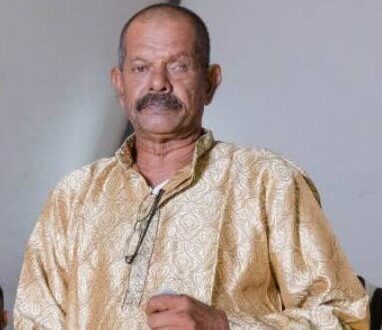Goodbye, Chatham Lion

BUDRAM HOLASS might not have been a celebrity or household name in more recent years, but anyone hearing his voice would have instantly recognised it.
Mr Holass, 68, who died last Friday after a prolonged illness, was synonymous with the world of chutney music. His powerful vocals – musical experts often praised his “bhaw” – were so unforgettable, so freighted with melancholy and character that they imprinted on not only the genre but also on the wider social consciousness. Few artists come to the core of a country’s cultural identity. He did.
While much of chutney was forged from a desire to create music with a spiritual function, the artform became far more expansive, paradoxically, because of its specific insistence on the retention of traditional languages that would be lost to us otherwise and in its deployment of older instruments. As the form evolved, shedding much of this political focus on preserving the past, it embraced its place in modern party culture. But the mark of figures like Mr Holass could still be felt.
Born on December 29, 1954, in Granville to musical parents, he later moved to Chatham, where he went to school. He eventually worked for Petrotrin, but was a singer all his life, releasing more than a dozen CDs and performing all over the world.
There is talk of erecting a statue for Mr Holass. That will not hurt. More enduring, however, would be an infrastructure to document, analyse and share the contribution of cultural figures like him.
When we think of chutney today, we think both of its older iterations alongside its newer, contemporary gloss. Events such as the annual spectacle of the Chutney Soca Monarch stand on the shoulders of much that came before. As an ailing Mr Holass was wheeled onto the stage of that competition earlier this year to sing his popular Thar Gori Jamuna Hilore, there was a palpable sense of timelessness, a timelessness that would have been jarring in any other context.
The old and the new, the past and the present – there is need for cultural organisations and government agencies to capture such complexities evident within our rich cultural space. Research should be encouraged. Education is paramount.
The passing of the torch is predicated upon being able to have the tools to frame the contribution of figures like Mr Holass, who was not only a prime exponent of chutney and East Indian classical music, but also sang calypso and extempo. To have heard him sing his spine-tingling renditions of songs like Aaye Bhi Akela Jaaye Bhi Akela and the more upbeat Aaj Moray Raghubir was to get a sense of a roving, yearning spirit; a spirit of a country in search of itself.


Comments
"Goodbye, Chatham Lion"